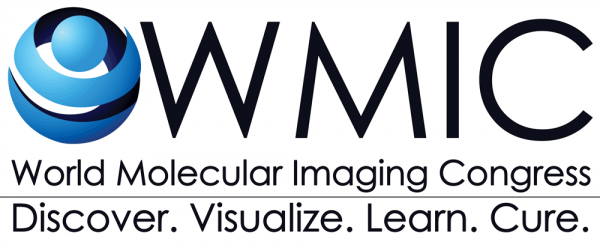Novel large gold nanorods for ultrahigh contrast and molecular sensitivity in biomedical applications
Elliott SoRelle, Stanford University
The vast majority of gold nanorods (GNRs) used in biomedical therapy and imaging studies are ~50x15nm particles produced by methods developed over a decade ago [1,2]. Recently, methods have been developed to produce larger-than-usual GNRs (~100x30nm) in higher purity and monodispersity [3]. Large GNRs are also predicted to have better optical properties than small GNRs [4]. Despite clear advantages, large GNRs are virtually absent from biomedical literature. Prior to such use, large GNRs must be surface coated to achieve stability in biological environments. Moreover, the ability to conjugate the particle surface with targeting biological moieties (such as antibodies) is highly desired for molecularly targeted studies. While coating methods exist for small GNRs [5], these methods have not been tested rigorously for large GNRs. Here we report significant flaws in common surface functionalization methods for gold nanorods (GNRs) of larger-than-usual sizes.
Small (~50x15nm) and large (~100x30nm) GNRs were produced using two published methods [1,3]. Particle morphology and size distribution were characterized using Transmission Electron Microscopy (TEM), and spectra were measured by Vis-NIR Spectrometry. Colloidal stability of each GNR was assayed at various stages of functionalization with different surface coatings using zeta potential and Vis-NIR measurements. Unlike small GNRs, large GNRs functionalized with PEG undergo irreversible aggregation and crash out of solution after minimal washing by centrifugation. In contrast to PEG, incubation with poly(sodium 4-styrenesulfonate) (PSS) made large GNRs extremely stable in aqueous solution. The stability of large GNRs in biological serum was also assessed and it was found that PSS-coated large GNRs remain highly stable in the presence of serum proteins. In addition to developing a strategy for large GNR stability, a novel platform to enable molecular targeting of large GNRs was also designed and validated through binding specificity experiments. Finally, large GNRs were shown to produce 32 times greater signal in Optical Coherence Tomography (OCT) than small GNRs in vitro (see figure). We also found that large GNRs exhibited 8 times greater extinction coefficient than small GNRs, making them superior photoacoustic contrast agents.
This work enables the use of large GNRs in biomedical applications for the first time through rigorous characterization and development of new surface chemistry approaches. This study also demonstrates tremendous advantages (e.g. increased particle contrast, signal sensitivity) that large GNRs possess compared to the current standards set by small GNRs. Our results also indicate that colloidal stability of large and small particles of similar chemical composition is predicated on different fundamental mechanisms. Importantly, the biomedical advantages of novel nanoparticle synthesis methods may not be realized without concurrent customized surface functionalization methods.
[1] Nikoobakht & El-Sayed, Chem Mater (2003)
[2] Jana et al, J Phys Chem B (2001)
[3] Ye et al, Nano Lett (2013)
[4] Jain et al, J Phys Chem B (2006)
[5] Niidome et al, J Control Release (2006)
